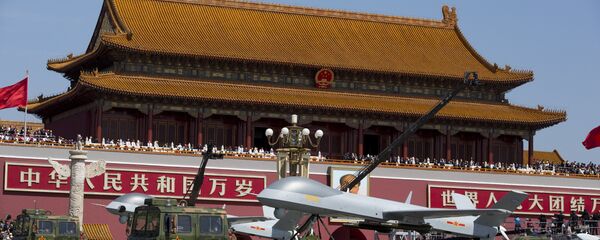The debt problem certainly deserves attention, but the IMF's conclusion that China's debt level will continue its rapid growth over the coming five years lacks a solid basis, as it has apparently failed to take into account a conspicuous slowdown in the real economy's leverage ratio as a result of multiple deleveraging efforts made by the Chinese government. That said, the fund's annual review of the Chinese economy should still be judged objectively when it comes to analyzing the level, structure and causes of China's debt.
The IMF has apparently overestimated China's future debt load. The country's overall leverage growth has slowed and is actually set to stabilize. Data from the Bank of International Settlements (BIS) showed that China's total debt as a percentage of GDP stood at 257 percent as of the end of 2016, down 4.4 percentage points from the level at the end of the third quarter of 2016.
This means that the debt level had moderated for the third consecutive quarter. It is estimated that if there is mild growth over the next five years — which means the total leverage ratio increasing by 1-1.5 percent on a quarterly basis or 4-6 percent per annum — the country will see its debt rising to 260-270 percent of GDP by the end of 2022. That's considerably lower than IMF's projection of 290 percent.
Unlike other countries, China holds a lot of high-quality assets, in areas such as infrastructure, and it has stable cash flows that can serve as a buffer against its debt load. Both State-owned enterprises (SOEs) and local governments have assets that are either profitable or that can be directly monetized.
According to the Chinese Academy of Social Sciences, the country's net sovereign assets were worth more than 100 trillion yuan ($15.18 trillion) as of 2015, and the net assets of government departments were estimated to surpass 20 trillion yuan. This indicates that the Chinese government has sufficient net assets to cope with its high debt load.
It must also be pointed out that the Chinese government clearly understands its debt problem and has taken an array of deleveraging measures. These have included pushing SOEs to lower their leverage ratios amid a wider overhaul of the State sector, dealing with "zombie" enterprises while cutting overcapacity, and ramping up swaps of corporate debt into equity to achieve ownership diversification.
Additionally, the country will continue developing its securities market and bond market, enabling greater access to direct financing. This along with more regulated and transparent fundraising by local governments will effectively ease the country's debt risks.
In a nutshell, any simple or facile interpretations of China's debt risks should be avoided, as the debt problem is expected to run its course over the long term. The Chinese government has already taken measures to lower debt ratios and it's unlikely that high debt levels will have a big impact on the world's second-largest economy as it settles into a steady and healthy growth path.
This article, written by Li Shigang and Cao Yujin, was originally published in the Global Times.





